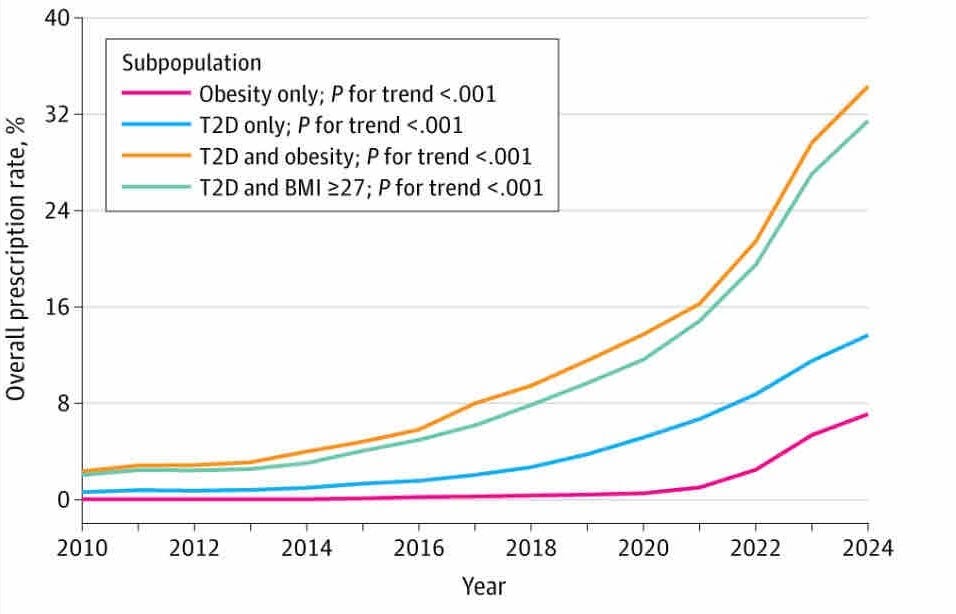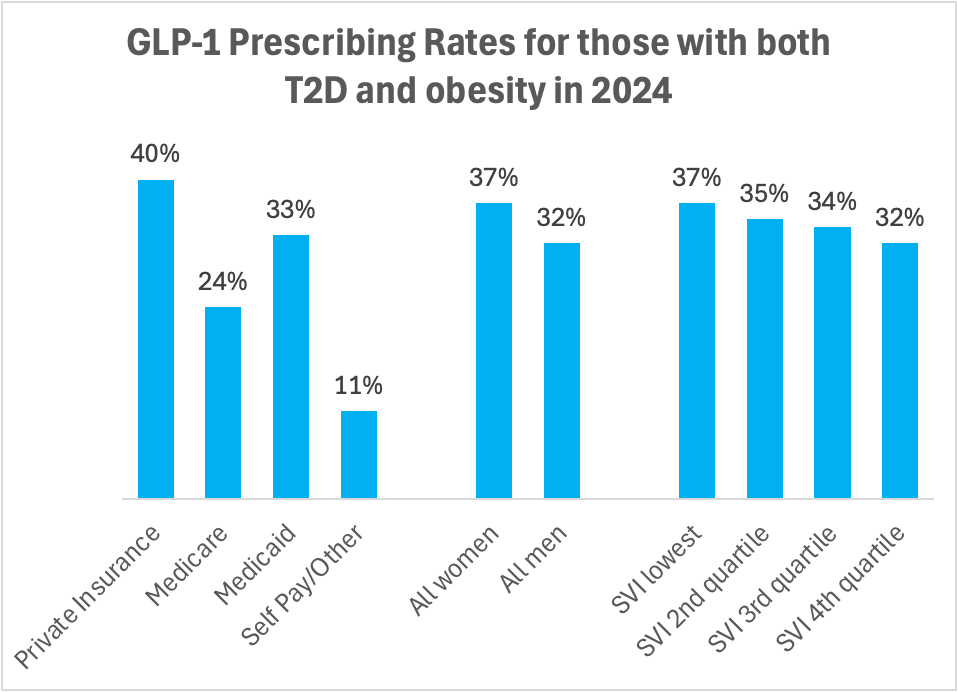GLP-1 Prescribing Is Rising — But Not Equally Across Populations
November 11, 2025
Summary: Prescriptions for GLP-1 medications have increased sharply for obesity, type 2 diabetes, and people with both conditions. However, men and individuals living in more socially vulnerable communities are less likely to receive them.
Prescription rate of GLP-1s based on diagnosis
Source: Piaopiao, L et al JAMA Network Open October 31, 2025
Research published in JAMA Network Open evaluated trends in prescribing of GLP-1 agents from 2010 through the end of 2024 using the Cosmos data warehouse, which has at least some medical records for 300 million Americans. They determined obesity from either diagnosis code or BMI calculated from height and weight, and assessed the presence of Type 2 diabetes (T2D) from medical records using a validated algorithm. Social Vulnerability Index (SVI) scores were assigned based on each patient’s ZIP code to reflect community-level disadvantage
The researchers found that rates of prescription of GLP-1 agents went up substantially starting in 2021. This coincides with when semaglutide was approved for the treatment of obesity, and when the advantages of GLP-1s for those with diabetes were better understood. They also found that prescribing was most common in those with private insurance. Prescriptions were also more common for women and those who lived in wealthier neighborhoods.
Source: Piaopiao, L et al JAMA Network Open October 31, 2025. SVI= Social Vulnerability Index. T2D= Type 2 Diabetes.
Implications for employers:
Employers are already well aware that the use of GLP-1 medications for both diabetes and obesity has increased dramatically.
GLP-1 drugs may be underprescribed for men, who are much more likely to die prematurely from heart disease.
These drugs are prescribed less for those who live in communities with a higher social vulnerability index.


